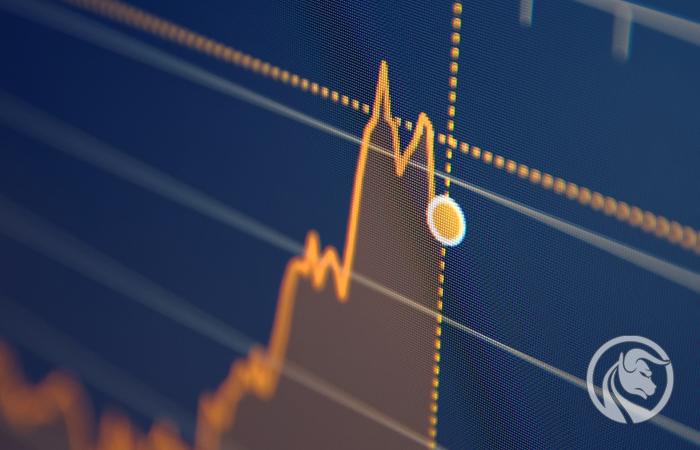Don't gamble everything on the yield curve control card
The intellectually lazy stance of the Fed on the yield curve control policy, which many commentators believe is inevitable, assumes that this is the easiest way to curb the rise in government bond yields that has been so much of concern to market participants lately. Yield curve control will simply be the next step for the Fed as soon as the market grumbles loud enough to justify doing so. Ultimately, it happened in the 40s. And do we remember Bernanke's reaction in July 2013 after two months of “hysteria of limiting” the yields on American bonds? Remember Yellen's 180-degree turn in early 2016 following the US dollar's vertical appreciation? So we know perfectly well that the Fed will do it soon, right? Not true. The reason why yield curve control is a last resort, and therefore will not be implemented in the near term, relates to the wide-ranging negative spillover effects of this policy:
1. This would eliminate all economic consequences of fiscal spending. Perhaps this is a dream come true for Modern Monetary Theory (MMT) supporters, however Federal Reserve is usually reluctant to issue a blank check for fiscal expenses. Despite interventions last year to support the economy, the Fed aims to develop a "market economy" in which the market does its own thing. Perhaps my observations are a bit late, but as a result of recent events, I interpret this position in this way.
2. The debt of the United States has just exceeded $ 28 trillion, and by 2050 it could reach up to $ 70 trillion! On this trajectory, Americans need foreigners to finance some of that debt, now and forever and ever and ever. In return, foreigners will want a higher return on their investment in US debt than they could get elsewhere in relation to inflation. If the Federal Reserve were to contain the cost of financing at the long end of the curve (10 years or more), the United States would not find buyers for its debt due to a lack of price discovery and confiscation implications. This path leads directly to Zimbabwe / Weimar / Venezuelan monetization and results.
3. The Fed wants to uplift the yield curve - it's better for loans and for banks that take out short-term loans and extend long-term loans, and most of the US administration's funding spans 0-3 years, the most important part of the yield curve. The long end with a ten-year or longer outlook is not much of a problem as long as the short end is anchored.
4. Chaos at the short end of the curve. The depletion of treasury funds at the Fed (which amounted to as much as USD 1,6 trillion in an emergency caused by the pandemic) caused a dysfunction in the repo market and at the shortest end of the US yield curve, where repo rates sometimes turn negative. The blame for this lies with the inexperienced president Williams of the New York branch of the Fed, who would need to be replaced. Some people think that this situation can be solved with the new version of "Operation Twist"in which the Federal Reserve would sell some stocks with shorter maturities to make purchases on the longer end of the curve. However, the effect would be the same as for a yield curve control, and it would set a precedent that the Fed would rather avoid. Another solution - an increase in bank deposit limits - would also have two important consequences: Congress does not want to "weaken" bank balance sheets, and why would Jamie Dimon and other CEOs burden themselves with even more US debt if the Fed were to curb its profitability?
Yes, problems at the short end of the yield curve will trigger some kind of Fed reaction, but expect very technical support on the short end that would increase liquidity and take the shortest rates away from zero.
About the Author
Steen Jakobsen, Chief Economist and CIO Saxo Bank. Djoined Saxo in 2000. As a CIO, he focuses on developing asset allocation strategies and analyzing the overall macroeconomic and political situation. As head of the SaxoStrats team, Saxo Bank's internal team of experts, he is responsible for all research, including quarterly forecasts, and was the founder of Saxo Bank's outrageous forecasts. Before joining Saxo Bank he cooperated with Swiss Bank Corp, Citibank, Chase Manhattan, UBS and was the global head of trade, currency and options in Christiania (currently Nordea). Jakobsen's approach to trading and investing is thought-provoking and is not afraid to oppose consensus. This often causes debate among the global market community. Every day, Jakobsen and his team conduct research in various asset classes, covering major macroeconomic changes, market movements, political events and central bank policies. With over 30 years of experience, Jakobsen regularly appears as a guest at CNBC and Bloomberg News.
If the Federal Reserve were to implement a yield curve control, it would be at a later date and most likely would not exceed the XNUMX-year government bond rate, unlike the XNUMX-year market predicted rate. The Fed may support fiscal spending while we have not yet completed vaccination and in the context of current employment and unemployment levels, but it will not completely abandon allowing the market to contain excessive spending by governments.
Of course, one wonders if it is too late for the Fed to adopt such an approach - given the direction of US budget deficits and the bond issuance necessary to cover them, but at least the Fed's modus operandi should be appreciated.
Consequences
Even if the Fed reacts to the latest signs of a dysfunction in the bond market, leading to some downward consolidation in yields, high-frequency data and the US fiscal stimulus package under development suggest that fiscal spending will increase further by the end of Q1,60 and the yields of the 1,65-year benchmark Treasury bonds will amount to 1,8 / 2,0%, and another "forced collapse protection" by the mortgage industry will push up yields to the level of XNUMX-XNUMX%. The trend is clear on all the charts: rates are going up, maybe not every day, but constantly.
My favorite method of tracking this is by observing the price of gold. If yield curve control were actually implemented, the price of gold would be $ 1 higher (as limited interest rates and inflation would push real rates to even lower negative values). Gold, meanwhile, is depreciating rapidly as real rates keep rising, despite Biden's upcoming monstrous fiscal spending of $ 000 trillion and $ 1,9-2 trillion in infrastructure spending, before the EU starts developing its new budget and China moves away from the current one rigid monetary policy. In other words, profitability growth is only just beginning as the real world is too small to accommodate fiscal infrastructure spending, green transition, and income support for the bottom half of the 'K' in a K-shaped recovery.
Gold is the best indicator of control of the yield curve and real interest rates. Another indicator can be speculative stocks and priced at inflated multiples of even the most stable free cash flow yields.






















![Forex Club – Tax 9 – Settle tax on a foreign broker [Download the Application] Forex Club - Tax 9](https://forexclub.pl/wp-content/uploads/2024/02/Forex-Club-Podatek-9-184x120.jpg?v=1709046278)
![Trading View platform – solutions tailored to the needs of traders [Review] trading view review](https://forexclub.pl/wp-content/uploads/2024/03/trading-view-recenzja-184x120.jpg?v=1709558918)
![How to connect your FP Markets account to the Trading View platform [Guide] fp markets trading view](https://forexclub.pl/wp-content/uploads/2024/02/fp-markets-trading-view-184x120.jpg?v=1708677291)
![How to invest in ChatGPT and AI? Stocks and ETFs [Guide] how to invest in chatgpt and artificial intelligence](https://forexclub.pl/wp-content/uploads/2023/02/jak-inwestowac-w-chatgpt-i-sztuczna-inteligencje-184x120.jpg?v=1676364263)


![WeWork – the anatomy of the collapse of a company valued at $47 billion [WeWork, part II] wework bankruptcy story](https://forexclub.pl/wp-content/uploads/2024/04/wework-bankructwo-historia-184x120.jpg?v=1711729561)
![Adam Neumann – the man who screwed up Softbank [WeWork, part AND] adam neumann wework](https://forexclub.pl/wp-content/uploads/2024/04/adam-neumann-wework-184x120.jpg?v=1711728724)





![How to transfer shares to another brokerage office [Procedure description] how to transfer shares to another brokerage house](https://forexclub.pl/wp-content/uploads/2024/03/jak-przeniesc-akcje-do-innego-biura-maklerskiego-184x120.jpg?v=1709556924)

![The most common mistakes of a beginner trader - Mr Yogi [VIDEO] Scalping - The most common mistakes of a beginner trader - VIDEO](https://forexclub.pl/wp-content/uploads/2024/03/Scalping-Najczestsze-bledy-poczatkujacego-tradera-VIDEO-184x120.jpg?v=1711601376)
![Learning patience: No position is also a position - Mr Yogi [VIDEO] Scalping - Learning patience - No position is also a position - VIDEO](https://forexclub.pl/wp-content/uploads/2024/03/Scalping-Nauka-cierpliwosci-Brak-pozycji-to-tez-pozycja-VIDEO-184x120.jpg?v=1710999249)
![When to exit a position and how to minimize losses - Mr Yogi [VIDEO] Scalping - When to exit a position and how to minimize losses - VIDEO](https://forexclub.pl/wp-content/uploads/2024/03/Scalping-Kiedy-wyjsc-z-pozycji-i-jak-minimalizowac-straty-VIDEO-184x120.jpg?v=1710336731)


















